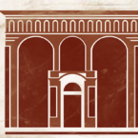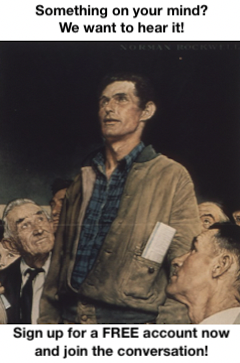Leaderboard
Popular Content
Showing content with the highest reputation since 03/27/2024 in all areas
-
3 pointsFor the record.... Although I believe it’s wrong for Moss to shirk the ACFR reporting, I tend to agree with the other point he made in his letter: If the County taxpayers are stakeholders (“owners”) of any facility or venue that has operating expenditures and revenue, the operations and financials of said facility need full transparency and accountability. This has been the case since.....forever. The Airport, Park Station and the Nursing Facility are county-owned "operations" that draw revenue from utilization. And all of their personnel decisions and expenditures are transparently reviewed and approved by the Legislature. Their revenue/expense books are transparently included in County financial reporting. Example: The Aviation Director's appointment (and his salary) are approved by the Legislature, and if he wants to pay someone to wax the floors at the Airport.....that process is subject to oversight and approval. The same premise should apply to the Arena (as well as the Fairgrounds Community Center, once it comes to fruition). However under CCCR, we don't know who appointed Robert Kramarik Marketing & Sales Director for First Arena. Is the “operating team” made up of volunteers or are they salaried positions? We also don’t know how events like “Cabin Fever” are funded. We know they had “carnival activities” (like inflated attractions and giant games). But no idea if those attractions were donated by a sponsor, or if the Arena put out for bids.....or if the Marketing Director has the authority to hire Bobby K Entertainment if he wants. On a final note: Just as Moss seems determined to clash with the Legislature, there are also a few Legislators who continue to look for reasons to clash with Moss. I think most of the public has had enough of the bickering and tit-for-tat attacks between the local branches. And we do appreciate those Legislators who don't engage in that petty power struggle.
-
3 pointsAbsolutely. It is not prepared by the auditor. It is prepared by the treasurer’s office and it can be included in the audit booklet or as a separate document. The auditor would have to review it to make sure it complies with the GASB standards . The ACFR is not required by law to be prepared, only the basic financials are but the preparation of it does represent the best practice of government finance. For those that are not aware of the difference between run of the mill financials and the ACFR, the ACFR gives more detail. You get guided through the financials, you are given statistics and analysis. You are also given a comparison to how the actual matched up to the budgeted. For basic financials you are just given the income stmt, balance sheet, and statement of cash flows and left to understand it yourself.
-
3 pointsNope, nope, nope...thats like putting salt on watermelon or syrup on corn-fritters and sausage Well theres nothing worse than expecting one texture, then suddenly experiencing the ear piercing crunch of a finely chopped(poorly hidden) onion Im amost thinking we Should just change the topic to "Adam's Opinions" instead? lol
-
3 pointsFrom Sheriff William Schrom:
-
3 pointsby Jeff Minick “A society that loses its sense of outrage is doomed to extinction.” So stated New York State Supreme Court Justice Edwin Torres over 30 years ago in a private communication. From the bench, Judge Torres added this lament: “The slaughter of the innocent marches unabated: subway riders, bodega owners, cab drivers, babies; in laundromats, at cash machines, on elevators, in hallways.” We find the judge’s remarks, which read like today’s headlines, cited in Senator Daniel Patrick Moynihan’s 1993 article “Defining Deviancy Down.” By normalizing what was once abnormal, Moynihan argues, we eventually ensure “the manifest decline of the American civic order.” He uses as his data points soaring rates of crime and gun violence, disintegrating families, a chaos of ideas about sexual practices and marriage, failing schools, and the closure of facilities for the mentally ill. Moynihan outlines his argument in this way: Now, flash forward 31 years. Those of us old enough to remember the 1990s may recollect that time as idyllic when compared to our present troubles. The Soviet Union had collapsed; the national debt in 1993 was around $5 trillion compared to today’s more than $34 trillion; our southern border was relatively secure. San Francisco was famed for its beauty rather than for its homeless population, crime rates in New York City were declining and would continue to do so over the next decade, and drug overdose deaths in 1993 were less than 10 percent of what they are today. Fortunately for the future of our country, some Americans of all ages are in fact outraged by today’s cultural radicalism and deviant behaviors. In “Culture Shock with Lindsay Wigo,” for instance, the young, eye-rolling Ms. Wigo brings us a man who claims deep suntans are racist, a woman who boasts about being a stalker, and another woman who identifies as a pig. In the 1990s, our society would have looked on this trio as oddballs at best and, at worst, as suffering from mental illness. Another negative take on our decline into deviancy —and there are countless others, both online and in conversations with our families and friends—can be found in Naomi Wolf’s “Broken in What Way?” Here, Wolf recounts at length a recent visit to New York, a city she loves but which now seems to be in ruins. “I think if one lives here day to day,” she writes, “the shocking decline of the city is not so obvious. But to me, the change in the city was like seeing a beloved friend, who had formerly been beautiful and enchanting and witty, in a hospital bed, on an IV drip, half-unconscious.” Here Wolf puts a finger on another reason for our demise: the gradualism that moves society from condemnation of an idea or a practice first to tolerance and then to acceptance. So, where do we turn if we wish to reverse this decline into deviancy? In 1993, Senator Moynihan recommended several political solutions, yet given the federal government’s increasingly dismal performance in the 21st century—the massive debt, the lost wars, the broken border, the malfunctioning domestic programs—that rutted roadway promises only more failures. No—if we are to reverse our present decline, we are the ones who must take action. In some instances, such as reducing the deviant federal deficit, most of us have only a vote as our weapon. In other cases, however, such as combating neighborhood crime, seeking the best possible education for our children, or opposing society’s attacks on marriage and the traditional family, our power to effect change vastly improves. Here we must begin by reviving the old-fashioned concept of decency, which one online dictionary defines as “behavior that conforms to accepted standards of morality or respectability.” Those standards derive from our Greco-Roman, Judeo-Christian heritage, but they have been shoved aside in the last 50 years in favor of relativism, which is no standard at all. We find one glaring example of this sea change in the recent phenomenon of drag queen story hours in our public libraries. Billed as family-friendly events promoting diversity and foisted off on communities by the American Library Association, these performances for children aim at subverting the family, normalizing deviancy, and confusing preschoolers about gender and sex. At the same time, we must recognize that accepting deviancy as a norm comes with a tremendous cost. In many of our large cities, for example, crime and murder are now accepted as everyday events. The weekend casualty counts, assaults, and robberies out of places like Chicago and New York receive due notice in some media, but little if any effort is put into reducing these tallies of murder, rape, and theft. Once we understand that the deviant behavior found across the board in today’s culture is neither normal nor desirable, and we have the heart and the spirit to do something about it, we can take action. The field of education more easily demonstrates this power of the individual or a group of citizens to make a difference. More families are homeschooling now than ever before, and private academies of all sorts are springing up around the country. Parents are voting with their feet and leaving government schools. The Dylan Mulvaney Bud Light ad and the subsequent backlash that caused Anheuser-Busch InBev to take a major hit in sales was yet another demonstration of our power to make change. The lesson there was to stop supporting companies that are intent on radical cultural transformation. Public libraries have also become battlegrounds in the culture wars. From Prattville, Alabama, Lori Herring writes “How to Save Your Local Library From Cultural Marxists.” Pratt and a group of concerned parents spent nearly a year working to divest their public library’s children’s section of pornographic material, but they finally succeeded. Courageous people like them are making a difference. To take charge of our lives rather than looking to government is a tradition as old as America itself, and it can be applied to everything from cleaning up our city streets of trash to crime prevention. Participating in local elections, voting, becoming candidates ourselves, volunteering, staying engaged in local affairs—in these ways and more, citizens can have a direct effect on culture and community. Stout hearts, willing hands, and a sense of common decency can heal any number of the wounds inflicted on our society. Enough, then, of defining deviancy down. Let’s start defining decency up. Jeff Minick lives in Front Royal, Virginia, and may be found online at jeffminick.com. He is the author of two novels, Amanda Bell and Dust on Their Wings, and two works of non-fiction, Learning as I Go and Movies Make the Man. This article appeared on IntellectualTakeout.org and is shared under a Creative Commons Attribution-ShareAlike 4.0 International License.
-
3 pointsEaster parades are over; a total solar eclipse before us. Birds are returning. I heard, in late February, that a friend had seen two bears, locally, and another friend mentioned the return of her bluebirds. The bluebirds were a welcome sign, but we hoped the bears would stay away until May. However, one or two have already come by, briefly, and so we will soon be moving the big seed cans into our storage shed. This means some inconvenience for me --- up our hilly lawn and around to the back of the out-building. But the exercise is probably a good thing and certainly better than allowing an ursine sunflower seed orgy on our sidewalk. Hopefully, those early bluebirds will find enough buggy food to satisfy their spring optimism. Do you know what a vernal pool is? In the woods on our farm, there were little pools that held water only for the spring season. By mid-summer they had dried up. But for a little while, they glimmered and rippled like tiny lakes, surrounded by mossy stones, and inhabited,just briefly, by tiny frogs, darting water insects and,maybe,possibly, wood faeries. They reflected carpets of violets and starry bloodroot blossoms. And on a nearby slope, in slightly drier terrain, there was a hillside of white trilliums. These 3-lobed trumpets must line the path leading to Heaven, they are so beautiful. In a slightly different terrain,the sandy soil in my brother’s woods (only 3 miles away) we used to find creeping arbutus, a delicate pink flower with a lovely fragrance. Vernal pools, opening wild flowers and a variety of mosses, all greening my little portion of earth. As lawns lose their winter brown, and the trees show the beginnings of leaves, it is good to just get outside. Andy Morris,* a regional poet, says this about the spring of the year in an aging world: “Kneeling down to feel the fresh green grass, I found, lying just beneath it, white as bone, a ghost of grass from a summer past, long since mown I held in my hand like so much paper, or even less than that, a milky vapor. And I thought of how age gives way to youth. And how truth is but the mulch for further truth. And I thought of how my life is but ashes, little more than a fading blade of grass. But when I looked again upon the scene, and remembered what I felt when at first, I knelt, and took the time to celebrate the green.” Celebrating the small bits of new life brightens my day. The seasons of fall and winter, and realization of aging may dim our spirits briefly, but we are restored by the whole, panoramic view of increasing “green”. “Green” is now what we all try to be in an attempt to be environmentally wise. We try to use products that do not pollute land, sea or air. Traditionally, spring cleaning has its own season. This endeavor, in the 1800s and early 1900s, involved rug-beating, scrubbing brushes, pails and pails of water, sometimes lye and white wash (and no latex gloves!). It was a labor-intensive series of tasks that truly was an actual “season”. Little House on the Prairie books give a couple of vivid house-cleaning scenarios. For them, it involved taking the old straw out of mattresses and replacing it with new straw, dragging the rugs outside to be beaten, and washing (with home-made soap) anything washable in the house. My only memory of anything resembling this, was when the inside of our dairy barn was swept down, hosed down and whitewashed, in the spring, after the cows had been let out to pasture. Today, vacuum cleaners, rug-shampooers, Swiffers and a whole array of cleaning products make house-cleaning all year ‘round a much easier process (though often quite polluting), and there is little need anymore, to tear up the entire residence. I think home-makers today may well wish to lift a glass of whatever to the new robotic cleaners, power washers and wipeable paints that make life so much easier --- and, if we are alert, safer too. As I thought about the tradition of spring cleaning, I was also reminded of other traditions with which I grew up. Sitting around a table for daily meals or for tea time is one custom that seems to be dwindling. TV trays, frozen dinners, and conflicting schedules have made meals less of a gathering-together event and more of a fast-food way of survival. We may be feeding our bodies, but are doing less in the way of nourishing our souls and connecting ourselves with family and friends. We did fairly well with sitting at table while our boys were home and in school but then college and summer jobs saw us sitting together less and less often. Now, Kerm and I do eat together but while watching the nightly news. Talk about inviting indigestion!! I have good memories of sitting around several tables. When we went home to visit, our first activity, after dropping our suitcases near the stairs,was to sit around my mother’s kitchen table for a cup of tea and molasses cookies. The table was placed before a large window with a bird feeder attached to the sill, looking out on a flower garden and a pond. So, there were plenty of beautiful things to watch and to encourage conversation. It was like taking a deep breath and relaxing for the allotted time of our visit. Then, at my brother’s house, the front door opened straight into the dining room. We shed shoes, and claimed a chair around the large dining table. We had cups of our favorite tea accompanied by considerable conversation and laughter as the stories flowed with who was doing what. There was a merry tale of a salad that was the “last straw” for Bob (not one for creative or odd foods) when he found a plastic curtain ring therein. There was the time I requested a wonderful potato soup recipe --- discovering that it was originally mine, but totally forgotten. Other family members often dropped in. As we talked, hands were busily doing bead work, blankets were being knitted, and one patient person was creating a needlepoint pillow cover. Coming home and being around a table was a mini-vacation from daily reality and created a sense of forever belonging. When we visited at Kerm’s home it was much the same feeling. I have old photographs of family sitting around the table at holiday time. The round table, pulled out, with leaves added, was laden with good food and filled the small dining room. Smiling faces indicated that we were in good company. Besides meals at that table, there were also riotous times of playing Monopoly or triple-deck pinochle, instigated by Kerm’s grandmother. Then the kitchen table was where we had delectable pancakes for breakfast and where we caught up with Kerm’s mother and what was going on in her life and the neighborhood. What we prideful, independent humans do not always realize is how much we need each other. Some of us mingle more reluctantly than others; we are introverts who find our peace in solitude and quiet. But even introverts need the company of others for healthy living. Good company, that is. I used to give my sister grief about not participating; about staying by herself (with a good book, of course) so much. In recent years, I’ve found myself behaving in a similar way. Given a choice, I’d usually rather stay home and read than go out and socialize, unless the people are near and dear. But when I do make the effort, I have felt completed and renewed by participating. Especially do I find this fellowship and encouragement in our small groups whether they be pinochle nights, Bible study or Spencer Singers. Small groups create a space where we feel safe and affirmed. So many people boast that they don’t need other people. But, of course, we all do. Every single one of us! Families, whether blood relatives or those we’ve built from friends, keep us connected to people who care about us and keep our ability to love, polished. There are two quotations that speak to the value of companionship. “Life is full of opportunities for learning love….the world is not a playground but a schoolroom. Life is not a holiday but an education. And the one eternal lesson for us all is how better we can love.** And, “Two people are better off than one, for they can help each other succeed…….three are even better for a triple-braided cord is not easily broken.”*** We need good people in our lives for support, for mirrors, and for inspiration. In April, besides finding companionship with people who make life better, the usual spring work is waiting to be done. As the buds on the lilacs and trees swell, so do the numbers of tasks on the “to-do” lists. We’ve had some rainy days this week, the upside of which is giving us a brief respite from the outside jobs. It is good to cross off some of the inside tasks ---- like taking down the glass snowflakes still decorating my porch and picture window, and sorting the immense pile of catalogs, letters and notes to myself. Whether inside or out, may your April bring you just enough showers to refresh, and may you rejoice in every bit of sunshine that comes your way. Be sure you notice the increasing, wonderful greening all around even as you carefully, with special glasses, watch the solar eclipse. Carol may be reached at: carol42wilde@htva.net. *Andy Morris ---from “Quiet Moments; Lessons In Life And Love” **Henry Drummond ---Scottish evangelist, biologist, and writer. 1851-1887. ***Ecclesiastes 4: 9 and 12b.
-
3 pointsInstalling a bidet at home made college dorm bathrooms seem so much worse than they already were lol
-
2 pointsNote worthy, if you look into what the award is, it has nothing to do with the financial health of the county but rather shows that the county is putting together extra reporting during the audit process of financial disclosures in order to receive the certificate. Not being eligible because of the type of opinion issued by Insero doesn’t mean the treasurers office can’t still make the choice to produce the work for the required reporting. As I have looked into what this award means and does for the county, the only benefit to the extra work on an already overworked department is further transparency for the tax payers which can be achieved without the certification. https://www.gfoa.org/coa-award
-
2 pointsI saw this on Twitter ( I think ) recently, labeled"Brutal Truth about NY" or some such thing:
-
2 pointsI know I’ve been hard on the local media over the years, and for the most part, with good cause. But I’ve been thinking about it more, especially since the incident at Target with Sheriffs Dept. Investigator Theetge, that what’s largely lacking is those people who’ve been here for more than a year or two, and have earned the trust of the community and their place in it. So with that in mind, I wanna give a shout out to Renata Stiehl, Nick Quatrini, and Joe Veres for sticking it out here at home instead of using this as a stepping stone to a bigger market.
-
2 pointsJust need a little paint over the graffiti and some TLC. Pay no attention to the full grown trees growing in the pool floor (foundation of the structure), it's nothing that a few volunteers with a couple bags of Sakrete can't spiff up good as new.
-
2 pointsOr perhaps they could have pursued a trade or a field of study that they could actually put to practical use in the job market in the first place.
-
2 pointsSince eliminating gluten, I no longer eat macaroni salad......but any ‘mayo based’ salad (macaroni, potato, egg salad, or even tuna salad) should have some crunch in it. Otherwise its just a mushy pudding texture. Like baby food. 🤢🤮 Never had carrots, but it would be worth trying. Celery and/or onions – absolutely necessary. But they must be raw/fresh. because the only thing worse than having an intentionally mushy texture is mushy ingredients that are supposed to be crisp.
-
2 pointsPolitics at work again. Was the “temporary” correction allowed to expire because of Trump’s involvement? Probably. Biden’s “forgive everyone” is a ploy to garner votes this November. Just my opinion of course. Thank you for the explanation MsKreed.
-
2 pointsYesterday reminded me of the last in this series of Peanuts comics from 1963:
-
2 pointsI would have happily beheaded one of the hens if it brought the sun out. What a disappointment. (Wait, I was reminded by a young lady to stay positive.) It got dark, it got colder… I guess that’s something. (?) I will say, I enjoyed seeing the coverage in the news as the moon made its way between us and the sun. It was nice to see so many people sharing a positive moment, even if we didn’t get to experience it ourselves.
-
2 pointsMeanwhile, a lot of humans are freaking out about tomorrow being The Rapture or something.
-
2 points
-
2 pointsMakes you wonder how much emerging tech is more old school than they'd have us believe.
-
2 pointsUnless the State provides glasses for every single inmate in DOCCS, they will get sued by a thousands claiming they have 'eye damage' from NYS allowing them to be exposed to danger. And even if they do give them all glasses, there would still be a large number who wouldn't use them and require medical care. Woodburn Correctional is a partial eclipses (less than 95%) anyway. If they weren't expecting an eclipse, chances are they'd have just thought it was heavy cloud cover. By the way.....any word on where these guys were in 2017? Were they all in prison then, or did any of them feel a strong enough religious urge to bother to travel someplace and "witness that sacred celestial event"?
-
2 pointsI remember hearing once that the litmus test for things racial when it comes to an ethnic joke it, if you swap out the group for another, is it still as funny? So for me, the basis for comparison would be the same. If someone wrote this article and inserted "urban black Americans" or "suburban gay Americans", would it still be relevant? I don't think the professor here would be so quick to write this column in the first place and if he did, it'd be more of a celebration. Interestingly, this popped up on Mike Rowe's Facebook page this morning. It reads in part: While the celebrations are "open to all students", are they really when you put a qualifier on them based on race, creed or sexual identity? In all fairness, it doesn't bother me that these different groups are having their own little celebrations. It doesn't bother me if "X" doesn't want to be around or associate with "Y" for whatever reasons they may have, so long as they are not doing anything to harm the other. Hell, the Supreme Court even upheld freedom of association as part of the First Amendment: So I'd have to disagree with the professor, or anyone, who says someone is a "threat to democracy" ( could one be any more hyberbolic ) or "un-American" because of who they choose to associate with.
-
2 points
-
2 pointsSo infuriating that NYS allows this creature to walk the streets without any bail.
-
2 points
-
2 pointsWow. Are there consumers who really believe this line of BS? Not only do falling prices not discourage consumers....there is a direct correlation that lower prices lead to increased purchases. From cars to electronics.....consumers buy more as prices fall. Things that used to be "luxuries" only found in a few households that became commonplace for every family to own more than one. DVD players, cell phones, TVs – you name it. Remember when a PC cost $5-6k and only a few geeks bought them? And here's what the result looked like: Source
-
2 pointsShe’s been caught. Sheriff William Schrom wrote the following on Facebook: UPDATE Fatiuna Massaline, driver of striking vehicle is in custody. I want to personally thank everyone who worked so hard today to track her down especially the members of our office, the New York State Police, and the Ithaca Police Department. Outstanding team work!!
-
2 pointsHave to wonder how those Troopers felt about being obligated to bring her to crash a solemn event, knowing that her presence would further add to the grief of the attendees. 🙁 And someone should ask her why a whole motorcade going round trip from Albany to Long Island wasn't all EV instead of gas guzzling SUVs .
-
2 pointsI get so confused about peoples attitudes on this. First there is nothing but crying about no affordable housing & crying because the city keeps knocking down historic buildings. So, they rehab 4 historic buildings and turn it into affordable housing and now everyone is crying because there will be nothing but riff/raff there. Can't win can they? I know Arbor takes Section 8 vouchers but low income doesn't necessarily mean people are dirtbags. Hell I know rich people who are dirtbags.
-
1 point
-
1 pointThis week’s Standing Committee Meetings HERE, committee proceedings were preceded by several presentations (From Public Health lead poisoning to Wastewater Treatment, to the services of Cornell Cooperative Extension) Around the 1hr25min mark.....The Ag Society’s new President had the a presentation. He began by highlighting plans for this year’s Fair (sounds very promising!). Then he discussed infrastructure projects they have done on the Fairgrounds recently. As well as appealing for County Funding ($100k) to facilitate infrastructure grants that the County can’t apply for itself (they can only be awarded to the Ag Society). And that rolled into a discussion about the value of utilizing the Fairgrounds year round. It sounds like there is interest from outside (regional) organizations (like Monster Truck rallies, etc). However, it doesn't seem that the County any staff (as the property owner) to promote coordinate. There wasn’t any specific mention of the Building that was proposed with ARP funds approved...but it sounded as if the Legislature could be hearing a more complete plans (hopefully in the near future). While the gentleman from the Ag Society seems very motivated, sincere and capable.....it isn't quite clear to me who would be responsible for bringing events to the the Fairgrounds if the County eventually approves a multi-use facility. I understand the Ag Society has deep ties to the Fairgrounds, but they are really only a "tenant", that doesn't control the property. But I doubt that would be any worse than having the Fairgrounds "operated" by the IDA/CCCR like First Arena.
-
1 pointThey should have been charged with something for harassing the little guys. To bad momma wasn't around for that.
-
1 pointby Erin Doane On November 7, 1923, the Elmira chapter of the Sons of the American Revolution held a meeting. At that meeting, the organization’s president Dr. Arthur W. Booth proposed the creation of a historical society to preserve historic objects, documents, and stories. The first official meeting of the Chemung County Historical Society took place two weeks later with 75 people in attendance. The Historical Society’s first home was in two rooms on the upper floor of the Steele Memorial Library on the corner of Lake and Church Streets (now the Chemung County Chamber of Commerce). The rooms quickly filled with donations from the community. Members of the society presented talks about local history and created displays of historic objects in the library for the public to enjoy. The Historical Society received its charter from New York State in 1947. Shortly after, they began searching for a stand-alone building to house the collections and provide more space for displays. In 1953, the Historical Society moved into 425 East Market Street and Frances Brayton was appointed as its first professional curator. It was around this time that Historical Society also began searching for the mammoth tusk that had been found by Judge Caleb Baker along the Chemung River in 1778. (Read all about that tusk and the Historical Society’s search for it here) While they were not able to find the original, they were able to get a similar mammoth tusk from the American Museum of Natural History in New York City. The Historical Society relocated again in 1965 to 304 William Street. The mammoth tusk and all the other historic objects, documents, and photographs that had been donated over the previous 40+ years were moved into their new home. Many of the objects were used in new exhibits focused on topics we still explore in the museum today - life here in the 1800s, the Civil War, local organizations and schools, and, of course, Mark Twain. Materials that didn’t go on display went into storage. Unfortunately, one of the main storage spaces in the building was the basement, which proved disastrous during the 1972 Flood. (click here to read how the Historical Society reacted to the flooding) The Chemung County Historical Society moved one more time to its current location at 415 E. Water Street. The building was originally home to the Chemung Canal Bank starting in 1833. After the bank moved into new headquarters, the building housed law offices and apartments. It underwent major renovations in the late 1970s and opened to the public as the Chemung County Historical Society in 1982. In 1986, the Historical Society received accreditation from the American Alliance of Museums (AAM). It was reaccredited most recently in 2021. Less than 5% of museum in the United States are accredited by the AAM. In 1992, further renovations to the building took place. An addition that includes the Howell Gallery, the Frances Brayton Education Room, and the Barn Gallery, as well as a new entranceway, was added to the main building. The Chemung County Historical Society currently operates the Chemung Valley History Museum and the Booth Research Library. Our mission is to deepen our understanding of history and to provide an appreciation of our community’s place in state and national history. We’ve done this over the last 100 years by collecting, preserving, interpreting, and presenting the history of our community and we plan to continue this mission for the next 100 years. And, yes, the mammoth tusk is still on display. Erin Doane is the Head Curator at The Chemung Valley Historical Society. For more information about the museum and to see more of their blog, click here
-
1 pointJust had some red lobster over the weekend and it was pretty good. Love the fact that you can just buy the biscuits by the dozen.
-
1 pointPeople need to stop making their politics part of their personality, particularly online. I don’t know how many times in a day I see someone’s profile read “proud lib” or “MAGA”. No one really cares! Is that the best you have to offer the world about what you are? And honestly, I find these type of people to be people I don’t want to be around anyway.
-
1 point
-
1 pointYou don’t like maple syrup on your breakfast sausage?!? I was obviously adopted. Or you were.
-
1 point
-
1 point
-
1 point
-
1 pointMade me think of "old" songs I learned as a kid - I don't even know the names of some of them. *Take Me Out to the Ballgame *Daisy, Daisy, give me you answer true... I'm half crazy over my love for you... (I don't know the name) *Little Red Caboose (chug, chug, chug) (name?) Ok... not as old as these Adirondack songs, I know
-
1 point
-
1 pointI'd say anything is possible at this point.
-
1 pointNew York State has some of, if not THE strictest gun laws on the books. What more would you have them do? Also, welcome to the site! 😃
-
1 pointEven as someone who is not served by the Sewer Districts, I do understand the "sticker shock" that many are having from their jacked up usage bills. And, as inflation strikes, the price tag is becoming too high for that consumer base to absorb. So it's not like doubled or triples sewer bills is even enough to meet the mandated upgrades anyway. If State and Federal bureaucrats are demanding these upgrades, then it's reasonable for state/fed funds to help make it happen.
-
1 pointI am continually seeing articles about the backlash of this album and resistance among country music to accept Beyonce into the fold. Of course it boils down to being about race. And maybe for a handful of people, it is. But I gave it a listen and to me, it just plain sucks. Putting a cowboy hat on your head and a banjo on a few tracks makes one "country" about as much as me wearing Adidas and gold chains and calling myself a hip-hop artist all the sudden. Sometimes a cigar is just a cigar, folks.
-
1 pointNot at all. It illustrates perfectly how important Porter's work was.
-
1 pointYa know , these songs and “ old time mountain music “ have so much in common in telling stories about everyday living and working . Since i have been playing Clawhammer banjo i have learned how relaxing the old time music can be to play . Call it “hillbilly” or whatever but sometimes its easy to listen to and some can be very melodic. A favorite that i play is Over the Waterfall , no lyrics , not complex just … nice . Simple yet kind of sad , Hobos Lullaby a Woody Guthry tune is another favorite. Yes , too bad there isn’t a CD of this but two sites i follow or Youtube are full of Adirondack and Appalachian music .
-
1 pointI know, I just have to decide if I really want to bother. It's so much easier to drink the fruits of others' labor!
-
1 pointby Cadence McManimon It doesn’t take a fashion designer’s sense to notice the decline of American clothing in the last few decades. The neat suits and dresses of yesteryear have been replaced with stretchy athleisure, the hats and coats vanished in favor of sweatshirts and leggings. Quite honestly, I don’t think fashion and clothing is all that important. Sure, we’ve lost some aesthetics and have nearly erased any sense of modesty. But in the end, clothes are still just clothes, right? And yet, even the humblest elements of history have something to teach us in this regard. For example, I have been a skinny jeans girl all my life. I literally used to sleep in jeans as a teenager! I prioritize comfort, as do most of my generation. I would be the last person anyone would expect to promote a return to wearing dresses. And yet, here I am, writing this while wearing an ankle-length skirt. What happened to me, a lover of comfortable modern clothes? I got pregnant. How very ordinary, right? I am currently expecting my third child with my husband, and since during my pregnancies I tend to get extremely sick, clothing choices rank at the absolute bottom of the priority list. That is, until this third time around, when I have some new symptoms. Let’s just say I am dealing with some inflammation in very sensitive areas! Tight clothes, legging seams, and denim fabric only worsen the discomfort. So, I’ve had to put away my beloved jeans in favor of soft skirts and dresses. And that’s when I realized why skirts have been so very practical throughout most of history. Most women, up until recent decades, did a lot more childbearing in their lives. It was common to have at least three children, if not seven or eight or more. Of course skirts would be more comfortable than pants as women carried, delivered, and nursed many consecutive babies! It’s only in recent decades that birth rates and motherhood have drastically decreased. On top of that, skirts and dresses are also far more adjustable for changing figures and weight fluctuations, which are a natural part of childbearing. I’ve been surprised these days that the garments that fit me the longest through my pregnancies are different dresses I’ve had since I was a teenager. Historically speaking, this type of adjustability was imperative during centuries when women could only afford two or three dresses. They needed clothes that would fit many seasons of life—it was simply impossible to buy different clothes for different body changes, as we have the option to do today. Along with that, historical—that is, non-synthetic—fabrics are far more durable. In the last couple of decades, we have had the luxury of clothing made of elastic fabrics. Clothes made of nylon blends, spandex, and jersey can stretch and accommodate pregnancies easily, as well as being affordable. So why am I nevertheless turning to skirts these days? Simple. Those elastic fabrics don’t hold up. They function like a rubber band and can only be stretched so often before losing their ability to “snap back.” The stretchy clothes I do have remain functional for only a year or so. The longest-lasting fabrics—coincidentally, those my dresses are made of, are woven from natural fibers such as cotton, linen, and wool. These fibers are simply more durable, and because they don’t stretch, they last for years and don’t wear out with laundering. It’s easy to see how this greatly benefited mothers throughout history. Along with these unexpected practicalities, I’ve also come face to face with dresses being gendered clothing. Our culture has distinctly pursued androgyny and unisex fashion, where men can wear women’s clothing or vice versa. Wearing traditional clothing is not in itself going to fix the gender confusion in our culture. But it does make an often subliminal visual statement. I recently came across this post by the Modest Mom from way back in 2012. I was impressed that her primary reasoning for dressing traditionally was not Biblical modesty, as I expected of her, stereotypically. Instead, she wrote about the stark visual difference skirts give to denote the female versus the male form. She said this is a very easy way to show her children the beauty and differences between the sexes. It reminded me of an experiment I took part in back in college. I, my sister, and a good friend were all in the depths of our coursework, and we had a lot of male classmates. We were discussing one day the popularity of androgynous athleisure fashion on our respective campuses. One of us had the bright idea to try a little social experiment just to see what would happen if we dressed completely femininely. So, on a normal day of classes, we each wore a pink dress all day long—and, yes, we agreed it had to be pink. We were shocked at the results. Yes, female students would comment “I like that outfit!” or “You look cute.” But the more drastic change came from our male classmates. My friend was in organic chemistry with almost exclusively male students; in her group project, she’d been pulling most of the weight in writing a hefty paper. But during the pink dress day, every member of her group offered to do double the amount he’d previously contributed! My sister experienced chivalry in the streets—every car driven by a man stopped to let her cross the road that day. I was offered multiple better seats in lecture halls, and every single time, men I barely even knew opened the door to let me pass. Without exception, we saw a huge increase in the amount of positive attention and deference from men in every setting. What was the lesson we learned? Men respond positively to women who look like women! Far from being preyed upon, as modern culture claims, looking feminine offered us three college girls more respect and kindness than wearing androgynous clothes ever did. And of course, I’m not the only writer to have noticed the difference dressing well can make in our lives. “What does our own sloppy dress tell us about ourselves?” asks Jeff Minick. “Are we rebelling against the idea of beauty and culture? Or are we just too lazy to pull on a pair of slacks instead of wearing the sweats we slept in?” As Maida Korte previously wrote on Intellectual Takeout, “Getting dressed in something more than flannel-patterned pants and a somewhat stale T-shirt signals that we are part of life and living it on purpose.” In our modern culture, have we too quickly thrown out skirts? What have we lost by rejecting the classic gendered dress of yesteryear? I don’t think we need to burn our jeans or swear off leggings forever, but we could certainly consider the benefits of returning to clothing that reflects our traditional values. What might dressing traditionally look like in our modern culture? It can start very simply: Recognize the value and visual signals of a classically gendered appearance. Apply good hygiene in our daily habits. Take five minutes to do something extra for our appearance, like curling or braiding our hair or having a fresh shave. Choose our clothing pieces thoughtfully. Practice frugality by maintaining the clothing we already have. There are so many small things like this we can practice, things that were commonplace mere decades ago. We don’t need to burn our newer wardrobes, or try to look like sock hop attendees, or start completely from scratch. A few small changes like this go a long way toward making our outward appearance reflect our values. Let’s rediscover the wisdom traditional culture can offer our modern closets. Cadence McManimon is a published author, former special education teacher, and now a wife and mother. She has too many houseplants, plenty of artsy projects, and not enough pens that work! (Doesn't everyone?) Her novels Name Unspoken and The Lily Girl are available at her website cadencemcmanimon.com. Her favorite things include crayons, sarcasm, Sherlock Holmes, and hearing from readers! This content originally appeared on InetellectualTakeout.org and is is licensed under a Creative Commons Attribution-ShareAlike 4.0 International License Image credit: Pexels
-
1 point“It was one of those March days when the sun shines hot and the wind blows cold; When it is summer in the light and winter in the shade….” Charles Dickens TA-Da!!! It is just past the Vernal Equinox and in my part of the world, Spring is here -- on the calendar as well as in reality! Spring, in Zones 4 and 5 can be quite liberally seasoned with big snowflakes, and chilly March winds, as has happened this week. We have, in some years, even experienced a blizzard in mid-April and wet snow flurries in May. But there is always the surety that these slight discomforts will not linger very long; spring, with its many moods, is here. Snowdrops and winter aconite have been in bloom for two weeks now, and the crocuses are an amazing patch of purple by the front steps. Day Lily leaves are 4-6 inches above the ground. While we were gone last weekend, a bear came through and pulled a bird feeder apart. He must have been a fast-moving young bear, because he apparently didn’t remember where the bird seed cans were, and didn’t do any other damage. It is no wonder, with such mild weather, that bears have awakened and are traveling earlier than usual ---- and are hungry!! Who doesn’t know the familiar old song “Easter Parade”: “In your Easter bonnet with all the frills upon it, you’ll be the grandest lady in the Easter Parade””? There are no parades around here, but we are a week away from Easter bonnets and spring clothes, which, depending on temperatures and precipitation, may not be just the thing to wear. Easter’s date is determined by the lunar calendar, not our monthly one, and it is quite early this year. Fortunately, Easter bunnies are like the U.S. postal system’s “neither rain, sleet nor snow will keep them from their tasks” motto; rabbits don’t mind a fresh snowfall or brisk winds, and come hopping by (candy-filled baskets in paws,?) as scheduled. Garden flowers, however, can be iffy. Daffodils usually recover from a spring snow. But tulips are less hardy and often sulkily wilt, just to exhibit their resentment. There will be pots and pots of flowers for Easter Sunday’s service, so that no matter what the skies are doing outside, the sanctuary will be full of fragrance and color, and a few sneezes from those sensitive to lilies and hyacinths. The week between Palm Sunday and Easter Sunday, is called, by many, Holy Week. In our community, for the past six weeks, there have been Lenten services on Wednesdays. This week, in addition, there is, a Maundy Thursday service, and three options for Good Friday. Then, early on Easter morn, there will be a sunrise service at an old Finnish church up in the hills, where the winds blow and mornings are a bit chilly due to altitude. Later, there are the usual Easter Day services in all the churches and then, perhaps, family dinners. It is a very “church-y” week for those who go. This quotation may not speak of Lent in a totally traditional way, but I would suggest it is one to consider, whether or not church is part of your life: “In case no one has told you lately, this is a reminder that you belong here. There is a you-shaped spot in the world that can only be filled by you. Don’t worry about why. Just know that it is there and it’s yours.” ** When we start thinking about this and what it means, we may find ourselves dwelling in our own 40 days of wilderness. And that time can be holy! It is nearly time for the snowbirds to return north, those humans who prefer to not use their shovels and plows, but who sit out winter where it is a gentler climate than NYS tends to be. Some come home for Easter, some wait until every possibility of snow is past (mid-May) and some meander about the country a bit; traveling before alighting. One couple I know plans to take a cruise to Amsterdam before heading back north. I hope it is tulip season there. I have never been a seasoned/enthusiastic traveler, though we have covered a bit of ground over the years. I find that I am even less open to traveling now, in my later years. Some of that is due to increased traffic and abysmally careless/stupid drivers on interstates, not to mention the hassles of flying. But much of it is that I really appreciate being at home with my just-fits-me chair, my own bed and my cup of good tea in the morning. I like greeting the same cardinals, blue jays and finches coming to the feeder., I like filling the cat’s water bowl, accompanied by his meows of what happened during the night (“just look at my dish; skunk footprints all around it!”). And I hate missing events in our own community. But, staying at home all the time can lead to being stuck-in-a-rut, and closed-minded, so a nice mix is probably good. Travel tends to banish prejudice and change perspective, as we actually meet and find common ground with people outside our usual sphere. We did just get back from a short trip to Vermont. One of our sons lives there, with his family, and it had been a while since we visited their home. Both the trip to Vermont and the trip home fell on nice days. We had clear roads and could enjoy the lovely scenery. During our time in Vermont, there was one day and night of snow. Depending on the altitude, the snow ranged from an inch to five or more. It turned the mountains into frosty snow-globes. Since we didn’t need to go anywhere in particular, we just enjoyed watching the snowfall while we were warm and cozy inside. Before the snow, we journeyed over “Terrible Mountain” to one of our favorite places – the Weston Priory. This is a Benedictine facility, and one of their ministries is choral and instrumental music. They also carve beautiful wooden crosses, throw pottery, and make wall hangings. We acquired a few more of their CDs (Yes, we still use CDs) and a couple of books by authors I enjoy. While we were in Weston, we also stopped by the Weston Country Store, and the more well-known Vermont Country Store, which is based there. After the snow, we went to Rutland, where we found some fine and fun shops, including a used-book store that took our breath away. So traveling, this time, made a very nice break from our daily routine here in Spencer, and it was a pleasure to spend some good times with family. Traveling anywhere else, though, must be put on hold for a bit, for the gardens already need our attention. This year, we are putting some beds into buckwheat, which will fertilize the soil and give it a rest from producing tomatoes and other crops. The rail fence needs a new post with which to hold the dropped rails, some shrubs and trees desperately need pruning, stone blocks around our vegetable garden beds need re-stacking due to winter heaving and,of course, there are the emerging weeds. And we probably should take down our “winter lights” that line the driveway and go across the front of our lawn. Usually, we have more of a breather in March. But with the unusually mild weather, chickweed is already growing profusely amid the flowers, undeterred by frosty nights. I know that chickweed can be used medicinally, but right now, I just want to give the little clumps of snowdrops, the buttery-yellow blossoms of winter aconite, room to breathe. So, when I can summon the determination to ignore my reluctant bones, I’ll be attacking those little green mats of flora, and removing them to the compost pile. This is such an exuberant, expectant time of the year. Green is emerging everywhere. Birds are singing in the morning. Peepers are making an increasingly loud clamor in the swamps across the road and in the stream behind the church. When the sky manages to be blue instead of Finger Lakes gray, it is the color of morning glories. Spring is a box of pastels, a sense of awakening and hope of the blossoms to come. And, according to Hal Borland***, an American naturalist, “March is a tomboy with tousled hair, a mischievous smile, mud on her shoes and a laugh in her voice.” Whatever these last days of March bring, I wish you a blessed Palm Sunday, a Joyous Easter, an inspiring spring and pleasure in each day. As one song says, “Every morning is Easter morning from now on….”!**** Carol Bossard writes from her home in Spencer. *Quotation is from Great Expectations. Charles Dickens was a British novelist and critic. Some of his characters are the best-known in the world. 1812-1870. **Sweatpants & Coffee LLC ***Hal Borland – American naturalist, writer, journalist from Connecticut. 1900-1978. ****Words and music by Donald Marsh & Richard Avery.










.thumb.png.589db21a13e796b1ff19299b375f9193.png)




